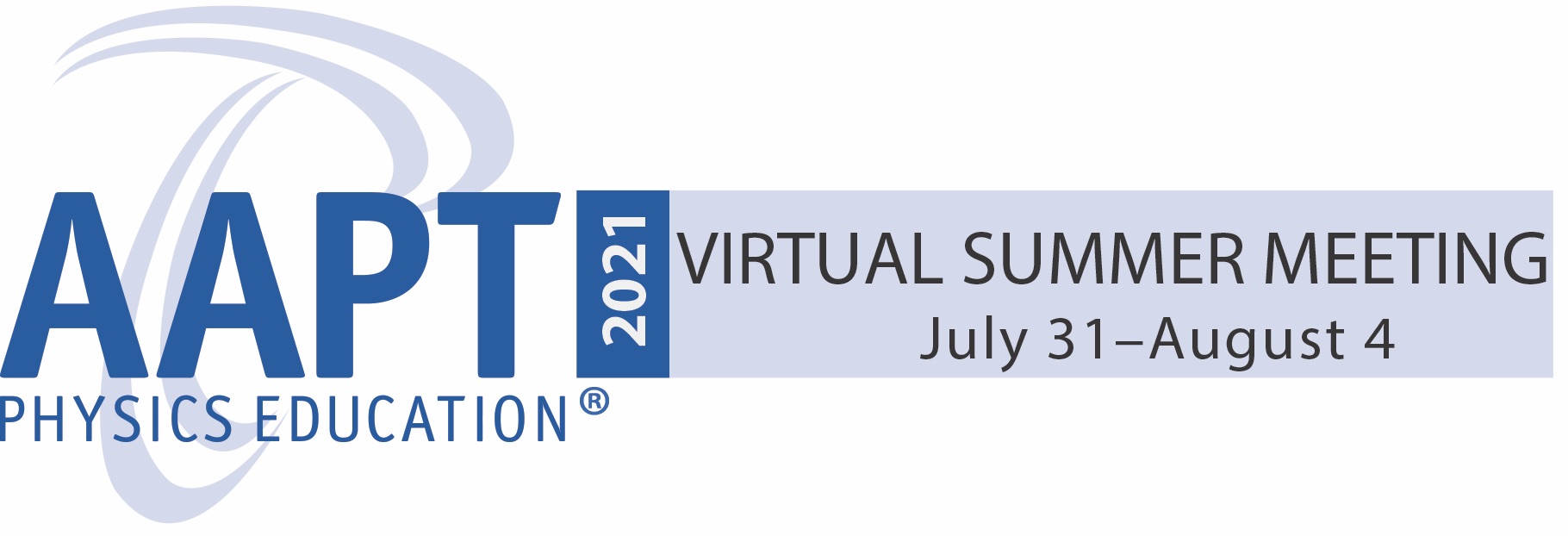 Summer Meeting 2021 Highlights
Summer Meeting 2021 Highlights
Statistics
Total Number of Attendees: 839
Exhibitors: 8
Commercial Workshops: 6
Sessions: 72
Topical Discussions: 8
Posters: 112
Workshops were held separately from the meeting.
Workshops: 14
Program Committee Chairs:
Jan Landis Mader and Toni Sauncy
Meeting Sponsors
Silver Sponsors:
- Pasco scientific
- Pivot Interactives
- Thorlabs
- Vernier
- VRLab Academy
Bronze Sponsors:
- AAPT
- AAPT Publications
- SPS
Paper Sorters
Jon Anderson, Alice Churukian, Jan Mader, Karen Jo Matsler, Duane Merrell, Nina Daye Morley, Emma Smith
Highlights
Over 800 physics educators joined in AAPT's Summer Meeting using a virtual platform. Plenary and general talks for this meeting were presented live and sessions were pre-recorded with access throughout the conference. Physics Education Researchers participated in the virtual post-meeting PER Conference, Making Physics More Inclusive and Eliminating Exclusionary Practices in Physics (https://www.compadre.org/per/conferences/2021/)
Plenary Speakers
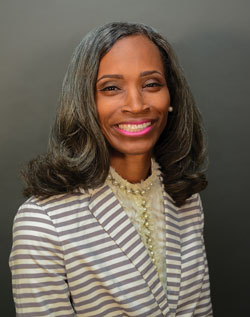 Diversity, Equity and Inclusion Plenary
Diversity, Equity and Inclusion Plenary
Dr. Angela Michelle White has an extreme passion for teaching and learning science. She earned a Bachelor of Science in Biology from the University of North Carolina at Chapel Hill, a Master of Science in Biology from North Carolina Agricultural and Technical State University, and a Doctor of Philosophy in Curriculum and Instruction with a concentration in Educational Psychology from North Carolina State University. Dr. White has served as an educator for 17 years at various levels and currently serves as the Assistant Dean of Student Success for the College of Science and Technology at North Carolina Agricultural and Technical State University. In this role she strategically develops and implements initiatives that promote the participation, academic achievement, and success of students within the College. Her current research interests, publications, and presentations give attention to racial identity, science identity, science self-efficacy, metacognition, and STEM achievement of African American students. As a strong advocate for the participation of African American females in STEM, Dr. White continuously engages in discourse and research that will promote greater access to STEM-related opportunities and recognition of African American females. Dr. White is also the co-founder of NoireSTEM, an educational consulting firm that seeks to increase access and achievement of African Americans in STEM degree programs and careers.
APS Plenary on Quantum Computing
 Ray—Based Framework for Tuning Quantum Dot Devices: Two Dots and Beyond
Ray—Based Framework for Tuning Quantum Dot Devices: Two Dots and Beyond
Justyna Zwolak is a scientist in the Applied and Computational Mathematics Division at National Institute of Standards and Technology in Gaithersburg, MD. She received an MSc in Mathematics from The Faculty of Mathematics and Informatics, Nicolaus Copernicus University, and a PhD in Physics from the Faculty of Physics, Astronomy and Informatics, Nicolaus Copernicus University, in TorunÌ, Poland. She subsequently was a research associate in the Department of Physics at Oregon State University, at the STEM Transformation Institute at Florida International University, and an assistant research scholar in the Joint Center for Quantum Information and Computer Science at University of Maryland, College Park, MD. Her research pursuits range from quantum information theory and machine learning to complex network analy-sis to mathematics and physics education. In her current work, Justyna uses machine learning algorithms and artificial intelligence, especially deep convolutional neural networks, to enhance and control quantum system and quantum computing platforms. In particular, she is investigating methods to automatically identify stable configurations of electron spins in semiconductor-based quantum computing. She is also developing a complete software suite that enables modeling of quantum dot devices, training recognition networks, and—through mathematical optimization— calibrating and controlling experimental setups. Success in this endeavor will eliminate the need for heuristic calibration and help scale up quantum computing into larger system. She is also involved in studies on diversity and inclusion at NIST.
APS Plenary on Quantum Computing
 Crystal Point Defects for Quantum Information Applications: From Deep Centers in Diamond to Shallow Impurities in Semiconductors
Crystal Point Defects for Quantum Information Applications: From Deep Centers in Diamond to Shallow Impurities in Semiconductors
Kai-Mei is an Associate Professor of Physics and Electrical and Computer Engineering at the University of Washington. She is the Director of the UW NSF Research Traineeship program Accelerating Quantum-Enabled Systems. Her research focuses on understanding and engineering the quantum properties of point defects in crystals, and utilizing these properties in photonic devices for quantum information and sensing applications. Kai-Mei Fu received her A.B. in Physics from Princeton University in 2000 and Ph.D. in Applied Physics from Stanford University in 2007.
Picture a Scientist Discussion
Picture a Scientist is a movie that chronicles the groundswell of researchers who are writing a new chapter for women scientists. Biologist Nancy Hopkins, chemist Raychelle Burks, and geologist Jane Willenbring lead viewers on a journey deep into their own experiences in the sciences, ranging from brutal harassment to years of subtle slights. Along the way, from cramped laboratories to spectacular field stations, we encounter scientific luminaries—including social scientists, neuroscientists, and psychologists - who provide new perspectives on how to make science itself more diverse, equitable, and open to all.
AAPT invited attendees to participate in the President’s Town Hall led by AAPT President, Chanraleka Singh. The new candidates for the Board of Directors were introduced using individual introductory videos. The Strategic Plan was discussed and members had an opportunity to participate in a Question and Answer session.
Awards
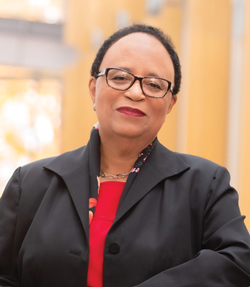 Dr. Shirley Ann Jackson has been named as the 2021 recipient of the prestigious Hans Christian Oersted Medal, presented by the American Association of Physics Teachers (AAPT). The Medal was awarded at a Ceremonial Session of the Summer Meeting. The Oersted Medal recognizes her outstanding, widespread, and lasting impact on the teaching of physics through her pioneering national leadership in physics education, her exceptional service to AAPT, and her mentoring of students and in-service teachers. Dr. Jackson, President of Rensselaer Polytechnic Institute, is a theoretical physicist. She has had a distinguished career that includes senior leadership positions in academia, government, industry, and research. She holds an SB in Physics, and a PhD in Theoretical Elementary Particle Physics—both from MIT. She is the first African American woman to receive a doctorate from MIT—in any field—and has been a trailblazer throughout her career, including as the first African-American woman to lead a top-ranked research university. In her talk, Physics: The River that Runs Through It All, Jackson discussed her own educational path, which led her to a doctorate from MIT in theoretical elementary particle physics, and the ways that her research career in condensed matter physics expanded into government, corporate, and academic leadership roles at the highest national levels. She considered “the Quiet Crisis,” America’s national need to bring women and underrepresented minorities into STEM fields in sufficient numbers, while continuing to attract talent from abroad. She offered observations and ideas for the ways that the nation’s physics teachers can help to bring the full talent pool into the field, as well as comment on the role of physics and physics-based education in creating a foundation for addressing complex global challengers for individuals and collaborative groups.
Dr. Shirley Ann Jackson has been named as the 2021 recipient of the prestigious Hans Christian Oersted Medal, presented by the American Association of Physics Teachers (AAPT). The Medal was awarded at a Ceremonial Session of the Summer Meeting. The Oersted Medal recognizes her outstanding, widespread, and lasting impact on the teaching of physics through her pioneering national leadership in physics education, her exceptional service to AAPT, and her mentoring of students and in-service teachers. Dr. Jackson, President of Rensselaer Polytechnic Institute, is a theoretical physicist. She has had a distinguished career that includes senior leadership positions in academia, government, industry, and research. She holds an SB in Physics, and a PhD in Theoretical Elementary Particle Physics—both from MIT. She is the first African American woman to receive a doctorate from MIT—in any field—and has been a trailblazer throughout her career, including as the first African-American woman to lead a top-ranked research university. In her talk, Physics: The River that Runs Through It All, Jackson discussed her own educational path, which led her to a doctorate from MIT in theoretical elementary particle physics, and the ways that her research career in condensed matter physics expanded into government, corporate, and academic leadership roles at the highest national levels. She considered “the Quiet Crisis,” America’s national need to bring women and underrepresented minorities into STEM fields in sufficient numbers, while continuing to attract talent from abroad. She offered observations and ideas for the ways that the nation’s physics teachers can help to bring the full talent pool into the field, as well as comment on the role of physics and physics-based education in creating a foundation for addressing complex global challengers for individuals and collaborative groups.
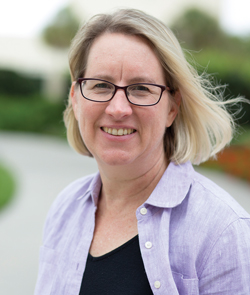 The Halliday and Resnick Award for Excellence in Under Graduate Physics Teaching was presented to Anne J. Cox. This award is given in recognition of contributions to undergraduate physics teaching and awardees are chosen for their extraordinary accomplishments in communicating the excitement of physics to their students. John Wiley & Sons is the principal source of funding for this award, through its donation to the AAPT. Cox is Professor of Physics, Eckerd College, St. Petersburg, FL. She graduated magna cum laude with her BS in Physics at Rhodes College, where she was the only female physics major, and earned her PhD in Physics at the University of Virginia. In her talk, Mission Possible, she noted that the work of physics teachers is unique. She reflected on what she has learned about physics teaching from many others as she celebrated the joint mission, shared pedagogical strategies, and highlighted challenges ahead. This talk was grounded in the tools of the physics teaching trade: simulations, laboratories, video analysis, and makerspaces. But it also acknowledged the human side of physics and the ways in which we connect with each other and our students, particularly through mentoring and JEDI-B work (Justice, Equity, Diversity, Inclusion and Belonging).
The Halliday and Resnick Award for Excellence in Under Graduate Physics Teaching was presented to Anne J. Cox. This award is given in recognition of contributions to undergraduate physics teaching and awardees are chosen for their extraordinary accomplishments in communicating the excitement of physics to their students. John Wiley & Sons is the principal source of funding for this award, through its donation to the AAPT. Cox is Professor of Physics, Eckerd College, St. Petersburg, FL. She graduated magna cum laude with her BS in Physics at Rhodes College, where she was the only female physics major, and earned her PhD in Physics at the University of Virginia. In her talk, Mission Possible, she noted that the work of physics teachers is unique. She reflected on what she has learned about physics teaching from many others as she celebrated the joint mission, shared pedagogical strategies, and highlighted challenges ahead. This talk was grounded in the tools of the physics teaching trade: simulations, laboratories, video analysis, and makerspaces. But it also acknowledged the human side of physics and the ways in which we connect with each other and our students, particularly through mentoring and JEDI-B work (Justice, Equity, Diversity, Inclusion and Belonging).
 The Klopsteg Memorial Lecture Award was given to Helen Czerski in recognition of her notable and creative contributions to the teaching of physics. Czerski is a physicist, first and foremost, but she’s acquired a few other labels along the way: oceanographer, presenter, author, and bubble enthusiast. She grew up near Manchester, in northwest England, and spent her childhood playing by the canals and along the old railway routes of the early Industrial Revolution. She studied Natural Sciences (Physics) at Churchill College, Cambridge, finishing with a first class degree. A year later, she returned to Cambridge to study for a PhD in experimental explosives physics, motivated by the opportunity to use high-speed photography to explore the physical world further. When the Apollo astronauts travelled to the Moon, the most memorable photograph they took was of the “Blue Marble”: the view of Earth from space. It was undeniable recognition that the blue – the ocean - is the defining feature of our planet. When you look at the phys-ics of Earth, the ocean engine also dominates the story. This talk will be about the physics of the ocean, and the perspective on our planet that we get from exploring it. Zooming in from the very large, we’ll get to the very small: the breaking waves and bubbles that are found at the ocean surface. Her talk, An Ocean of Bubbles, recognized that these bubbles help the ocean breathe, and her research is focused on understanding how they form, and how they help that breathing process. But before you can study them, you need to work out how to measure them, so she also covered the ways to use sound and light to detect bubbles that are too small to see, or too fleeting to catch.
The Klopsteg Memorial Lecture Award was given to Helen Czerski in recognition of her notable and creative contributions to the teaching of physics. Czerski is a physicist, first and foremost, but she’s acquired a few other labels along the way: oceanographer, presenter, author, and bubble enthusiast. She grew up near Manchester, in northwest England, and spent her childhood playing by the canals and along the old railway routes of the early Industrial Revolution. She studied Natural Sciences (Physics) at Churchill College, Cambridge, finishing with a first class degree. A year later, she returned to Cambridge to study for a PhD in experimental explosives physics, motivated by the opportunity to use high-speed photography to explore the physical world further. When the Apollo astronauts travelled to the Moon, the most memorable photograph they took was of the “Blue Marble”: the view of Earth from space. It was undeniable recognition that the blue – the ocean - is the defining feature of our planet. When you look at the phys-ics of Earth, the ocean engine also dominates the story. This talk will be about the physics of the ocean, and the perspective on our planet that we get from exploring it. Zooming in from the very large, we’ll get to the very small: the breaking waves and bubbles that are found at the ocean surface. Her talk, An Ocean of Bubbles, recognized that these bubbles help the ocean breathe, and her research is focused on understanding how they form, and how they help that breathing process. But before you can study them, you need to work out how to measure them, so she also covered the ways to use sound and light to detect bubbles that are too small to see, or too fleeting to catch.
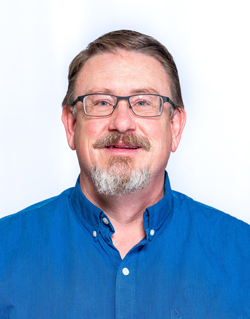 Brad Talbert, recipient of the 2021 Paul W. Zitzewitz Award for Excellence in K-12 Physics Teaching is a high school teacher at Lone Peak High School, Highland, Utah. This award is in recognition of contributions to pre-college physics teaching and awardees are chosen for their extraordinary accomplishments in communicating the excitement of physics to their students. Educated at Brigham Young University, Provo Utah, Talbert earned his Bachelor of Science in Mechanical Engineering and his Master of Science in Instructional Psychology and Technology. He earned a second Bachelor of Science, and Teacher Certification with Math Level IV and Physics endorsements from Southern Utah University. He received advanced training in Modeling Instruction for High School Physics at Arizona State University. His talk, Physics Is the Portal, he noted that Early physics instruction (9th or 10th grade) opens doors to higher achievement in chemistry, math, advanced biology, and engineering. As students learn to organize complex information to find solutions to assigned problems and engineering tasks, they improve abstract reasoning skills and gain increased self-confidence. A first experience with physics ought to include challenging mathematical structure but also provide many concrete hands-on learning experiences.
Brad Talbert, recipient of the 2021 Paul W. Zitzewitz Award for Excellence in K-12 Physics Teaching is a high school teacher at Lone Peak High School, Highland, Utah. This award is in recognition of contributions to pre-college physics teaching and awardees are chosen for their extraordinary accomplishments in communicating the excitement of physics to their students. Educated at Brigham Young University, Provo Utah, Talbert earned his Bachelor of Science in Mechanical Engineering and his Master of Science in Instructional Psychology and Technology. He earned a second Bachelor of Science, and Teacher Certification with Math Level IV and Physics endorsements from Southern Utah University. He received advanced training in Modeling Instruction for High School Physics at Arizona State University. His talk, Physics Is the Portal, he noted that Early physics instruction (9th or 10th grade) opens doors to higher achievement in chemistry, math, advanced biology, and engineering. As students learn to organize complex information to find solutions to assigned problems and engineering tasks, they improve abstract reasoning skills and gain increased self-confidence. A first experience with physics ought to include challenging mathematical structure but also provide many concrete hands-on learning experiences.
 Gregory E. Francis received the 2020 Robert A. Millikan Medal for his notable and creative contributions to the teaching of physics. Francis is the Director of the Master of Science in Science Education Program at Montana State University, Bozeman, MT. This program offers a unique blend of online and field courses for K-12 educators. In his talk, Two Red Bricks: Is A Good Lecture Better Than No Lecture At All? he noted that it has been said the typical lecture is every bit as effective as placing two red bricks in front of the class for fifty minutes. He has spent his teaching career trying to improve upon that baseline. He discussed different techniques used in his large introductory algebra-based courses to make the lecture experience more active and student centered. He has found that using the lecture as a support platform built around the Tutorials in Introductory Physics by Lillian McDermott, Peter Shafer, and the Physics Education Group at University of Washington yields measurable gains in student conceptual understanding and retention./
Gregory E. Francis received the 2020 Robert A. Millikan Medal for his notable and creative contributions to the teaching of physics. Francis is the Director of the Master of Science in Science Education Program at Montana State University, Bozeman, MT. This program offers a unique blend of online and field courses for K-12 educators. In his talk, Two Red Bricks: Is A Good Lecture Better Than No Lecture At All? he noted that it has been said the typical lecture is every bit as effective as placing two red bricks in front of the class for fifty minutes. He has spent his teaching career trying to improve upon that baseline. He discussed different techniques used in his large introductory algebra-based courses to make the lecture experience more active and student centered. He has found that using the lecture as a support platform built around the Tutorials in Introductory Physics by Lillian McDermott, Peter Shafer, and the Physics Education Group at University of Washington yields measurable gains in student conceptual understanding and retention./
 Ramón S. Barthelemy has been named the recipient of the Doc Brown Futures Award. This award recognizes early-career members who demonstrate excellence in their contributions to AAPT and physics education and exhibit the potential to serve in an AAPT leadership role. Barthelemy’s talk, Queering Physics Education Research: A History of Queer Rights in the USA and Physics presents his work in Physics Education Research. A member of AAPT since 2011, Ramón Barthelemy is an early-career physicist with a record of groundbreaking scholarship and advocacy. He has advanced the field of Physics Education Research (PER) as it pertains to gender issues and LGBT+ physicists. Through service and advocacy, he has strengthened AAPT’s efforts to broaden participation in physics.
Ramón S. Barthelemy has been named the recipient of the Doc Brown Futures Award. This award recognizes early-career members who demonstrate excellence in their contributions to AAPT and physics education and exhibit the potential to serve in an AAPT leadership role. Barthelemy’s talk, Queering Physics Education Research: A History of Queer Rights in the USA and Physics presents his work in Physics Education Research. A member of AAPT since 2011, Ramón Barthelemy is an early-career physicist with a record of groundbreaking scholarship and advocacy. He has advanced the field of Physics Education Research (PER) as it pertains to gender issues and LGBT+ physicists. Through service and advocacy, he has strengthened AAPT’s efforts to broaden participation in physics.
 Alexis V. Knaub received the association's Homer L. Dodge Citation for Distinguished Service to AAPT. Established in 1953 and renamed in recognition of AAPT founder Homer L. Dodge in 2012, the Homer L. Dodge Citation for Distinguished Service to AAPT is presented to members in recognition of their exceptional contributions to the association at the national, sectional, or local level.
Alexis V. Knaub received the association's Homer L. Dodge Citation for Distinguished Service to AAPT. Established in 1953 and renamed in recognition of AAPT founder Homer L. Dodge in 2012, the Homer L. Dodge Citation for Distinguished Service to AAPT is presented to members in recognition of their exceptional contributions to the association at the national, sectional, or local level.
2021 AAPT Summer Fellows
The criterion for selection of Fellows is exceptional contribution to AAPT's mission, to enhance the understanding and appreciation of physics through teaching. Fellowship is a distinct honor signifying recognition by one's professional peers. Any AAPT member who has maintained an active membership for at least 7 years is eligible for nomination for Fellowship. Nominations are evaluated by the AAPT Awards committee and approved by the AAPT Board of Directors. The AAPT Fellows awards were presented to Dan Burns, Cabrillo College, Aptos, CA and Doug Brown, Los Gatos High School in Los Gatos, CA
We thank our sponors for their generous support of this virtual meeting. We couldn't have done it without them and our supportive members.

